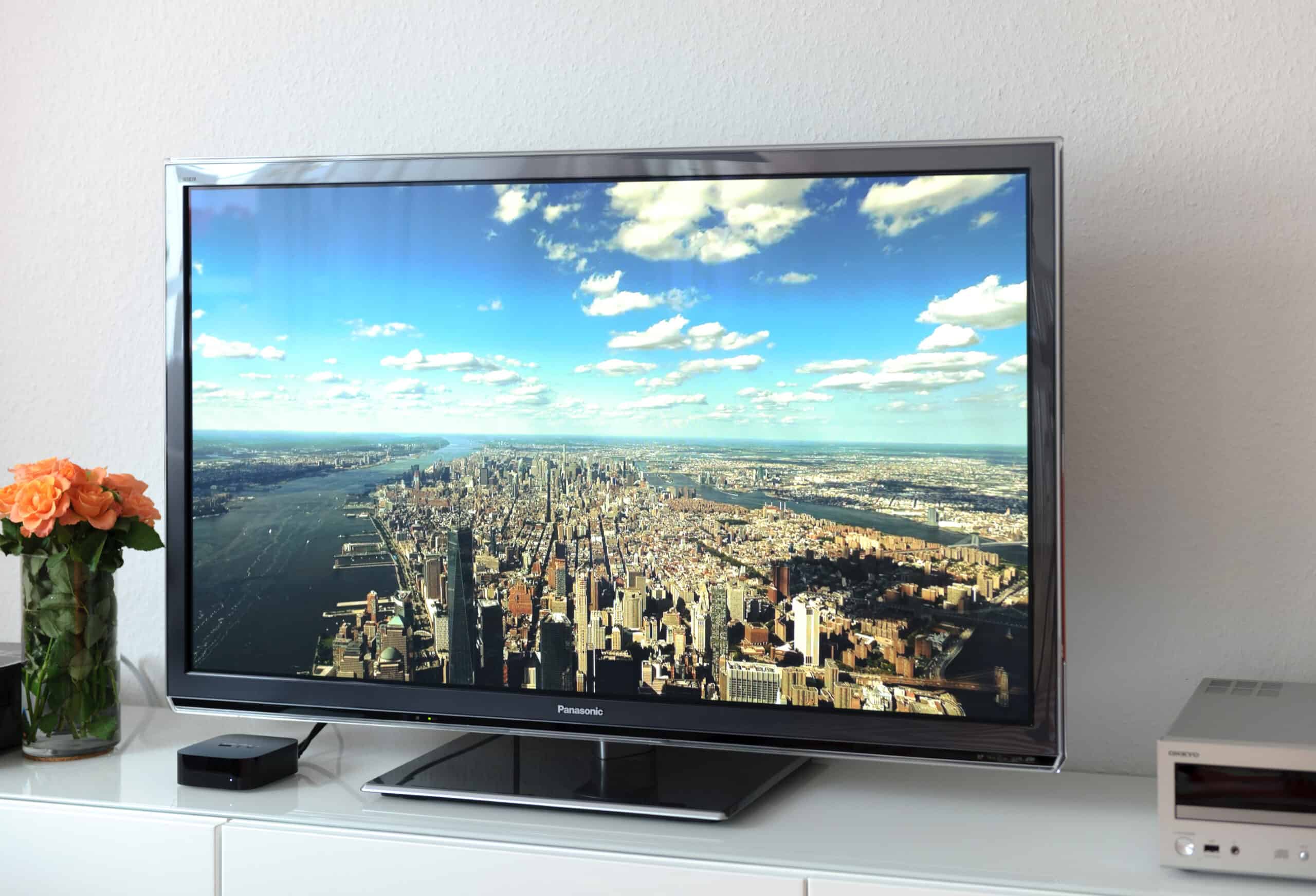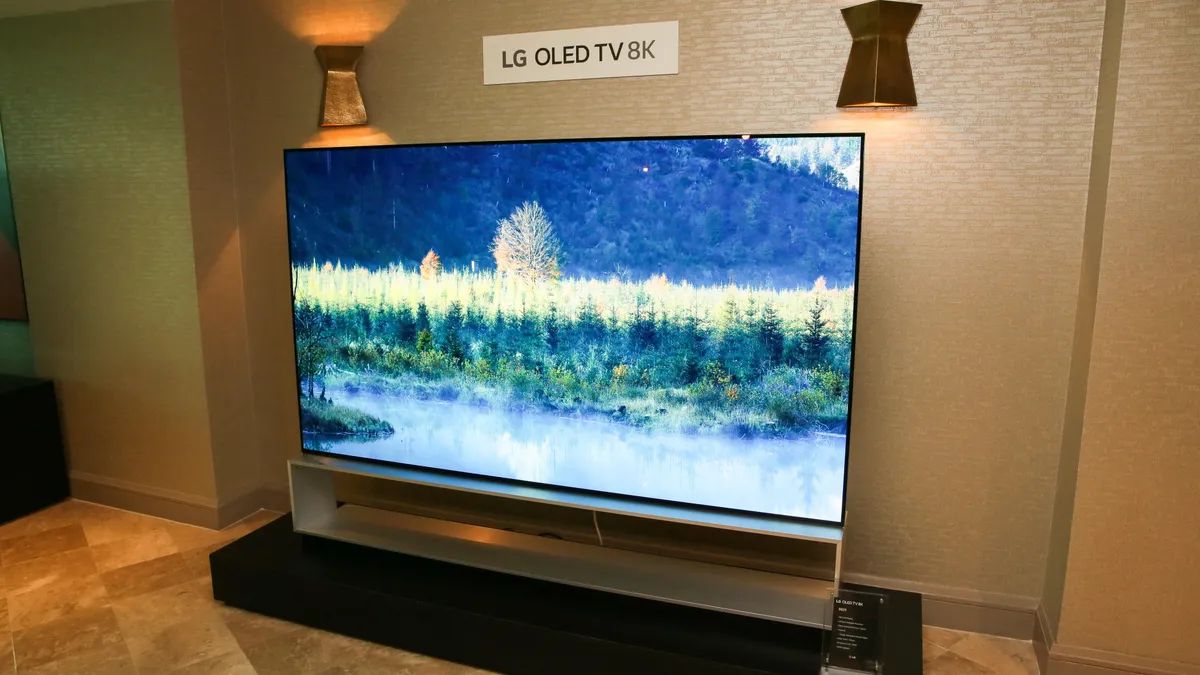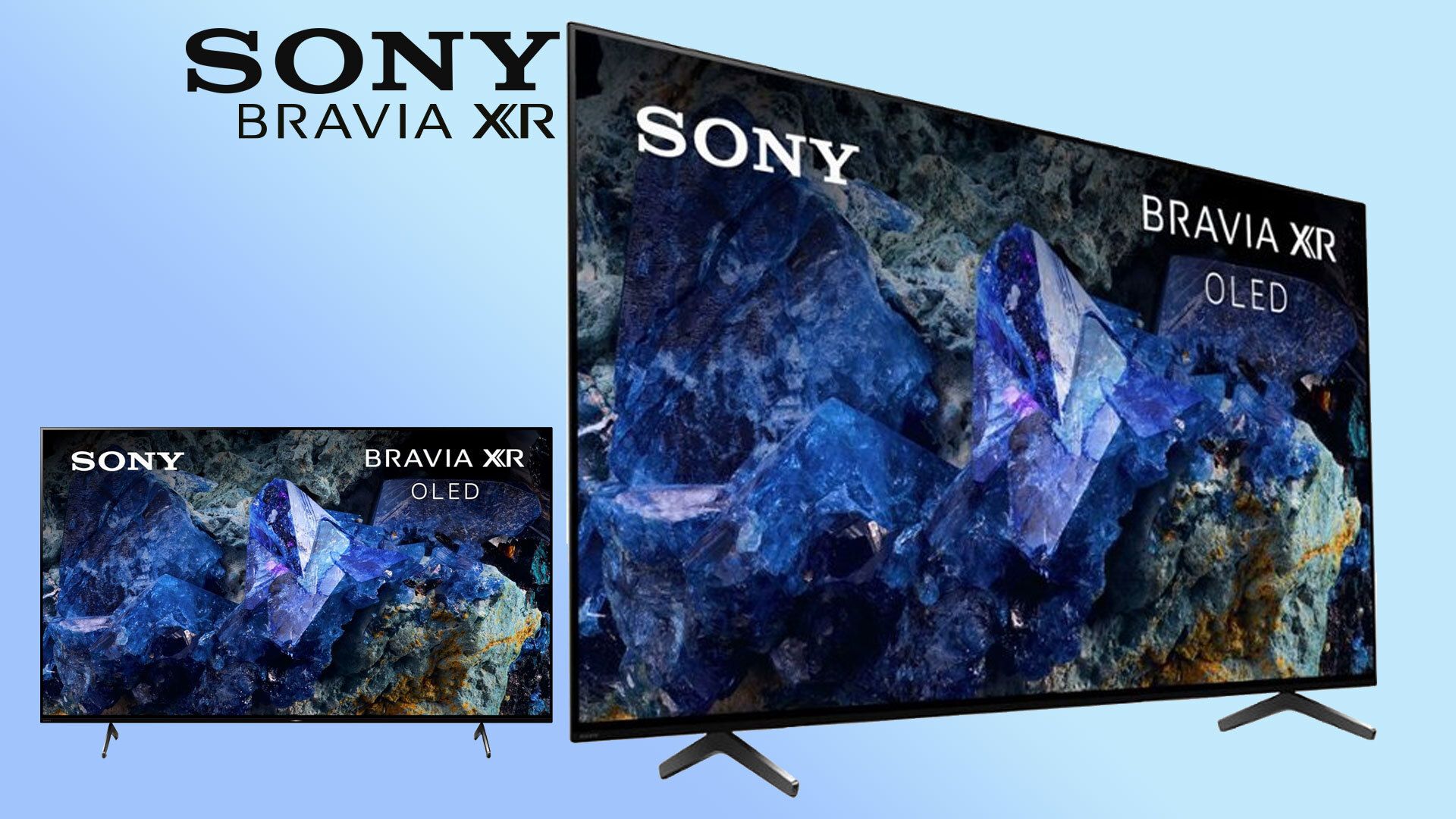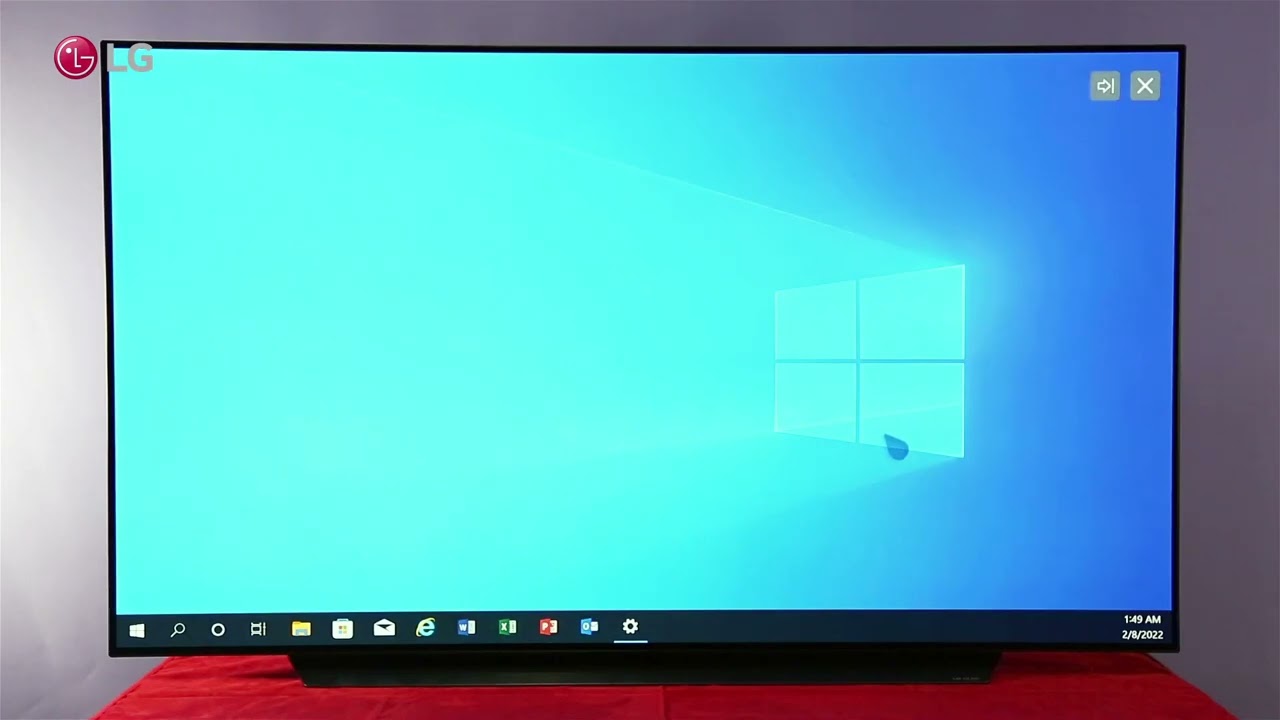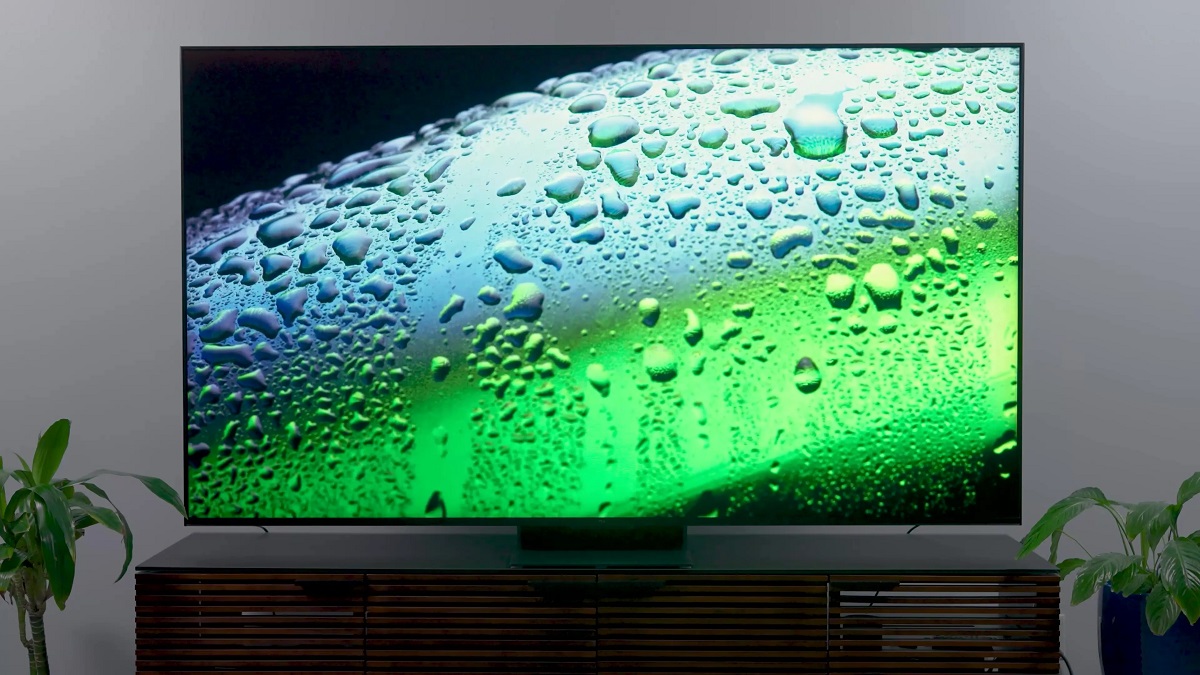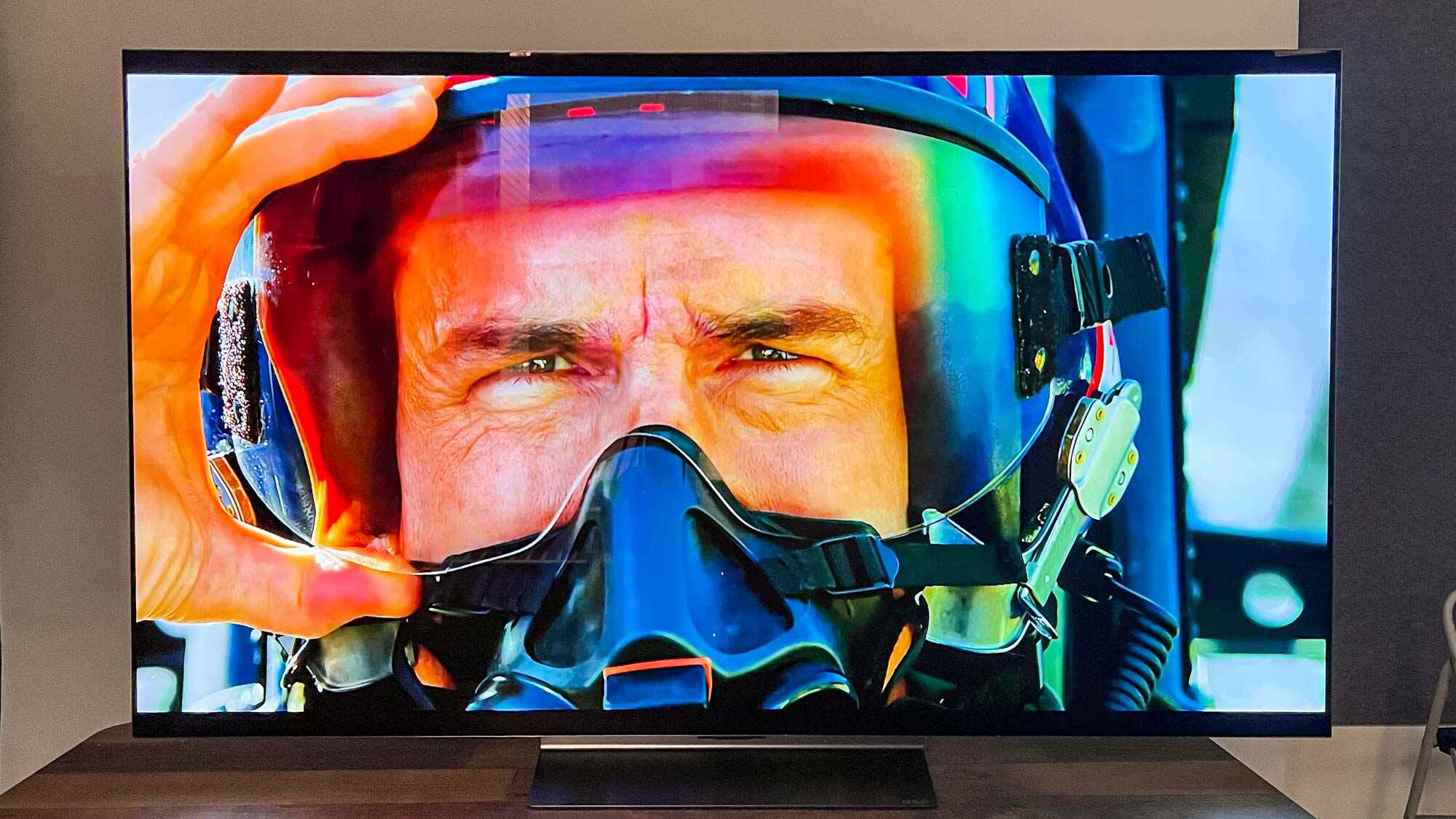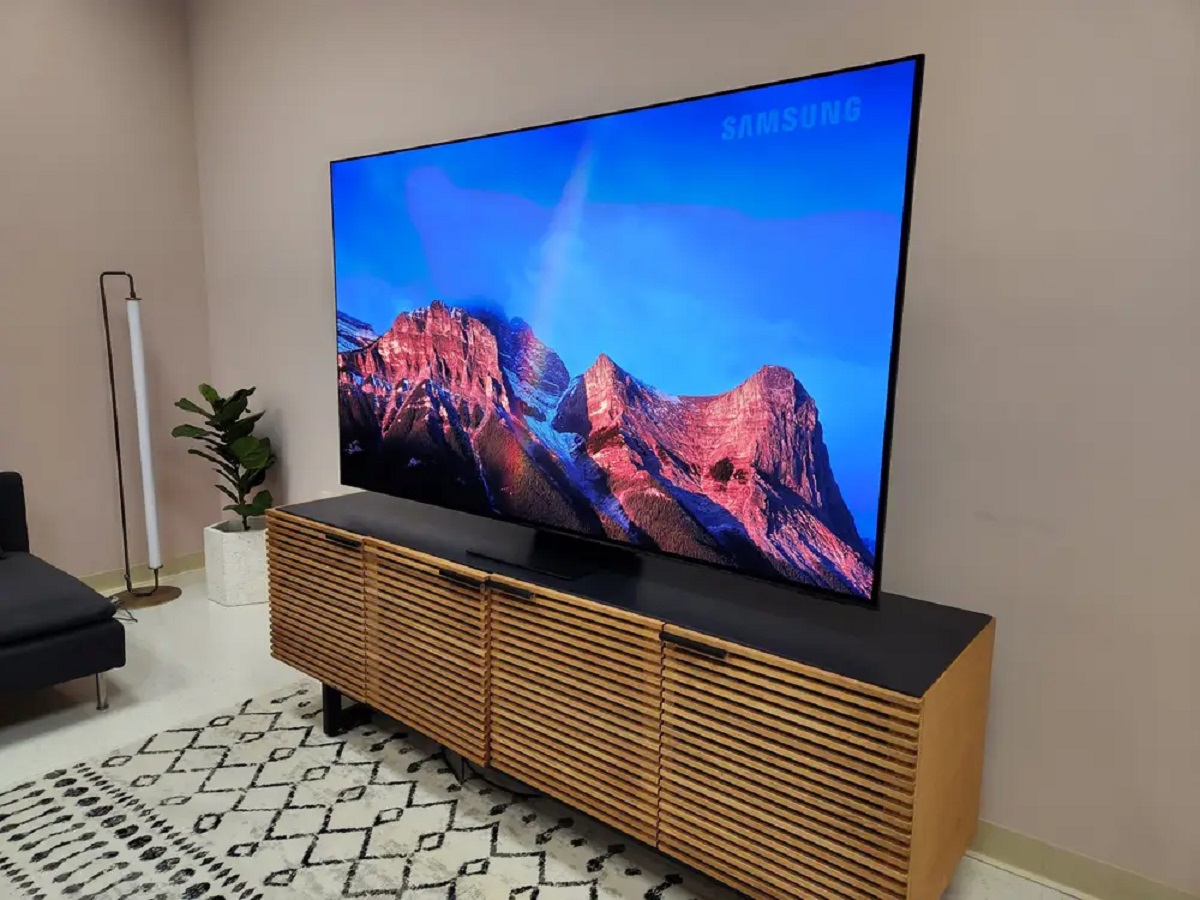Introduction
Welcome to the world of television technology! Over the years, we have witnessed remarkable advancements in the way we enjoy our favorite shows and movies. One such breakthrough is the rise of OLED (Organic Light-Emitting Diode) TVs. These cutting-edge displays have captivated consumers with their stunning visuals and outstanding performance.
In this article, we will explore the world of OLED TVs, discuss their advantages and limitations, and take a glimpse into the future of TV technology. So, if you’re contemplating upgrading your television or simply curious about the latest developments in the industry, you’re in for a treat!
OLED technology has revolutionized the way we perceive television displays. Unlike traditional LED or LCD panels that require a backlight, OLED TVs utilize organic materials that emit light when an electric current is passed through them. This unique feature allows OLED displays to achieve jaw-dropping contrast ratios, vibrant colors, and incredible picture clarity. The result? A mesmerizing viewing experience that brings your favorite content to life.
As we dive deeper into the world of OLED TVs, we will discuss both their advantages and limitations. Understanding these factors will help you make an informed decision when purchasing your next television. Plus, we will touch on the emerging display technologies, such as Mini-LED, MicroLED, and QLED, that aim to enhance the TV viewing experience even further in the near future.
So, buckle up and get ready to embark on a thrilling journey through the realm of OLED TVs and beyond. Whether you’re a cinephile, sports enthusiast, or gaming aficionado, there’s something here for everyone. Let’s explore the fascinating world of OLED TVs and unravel the possibilities that lie ahead!
The Rise of OLED TV
In recent years, OLED TV has emerged as a dominant player in the television market, captivating consumers with its astonishing display capabilities. The journey of OLED technology began with small screens, such as smartphones and tablets, but it didn’t take long for its potential to be recognized in the larger TV market.
The first commercially available OLED TVs made their debut in 2013, and since then, their popularity has been steadily increasing. What sets OLED TVs apart from their LCD and LED counterparts is their ability to produce perfect blacks and infinite contrast levels. Each pixel in an OLED display can emit light independently, allowing for precise control over brightness and darkness. This results in incredibly detailed images and an immersive viewing experience that simply cannot be replicated with other technologies.
Moreover, OLED TVs offer wider viewing angles, ensuring that everyone in the room gets the same vibrant and accurate colors, regardless of their seating position. This makes OLED a perfect choice for larger living rooms or home theaters where multiple viewers can appreciate the cinematic quality of the display.
As OLED technology matured, manufacturers started pushing the boundaries of screen size. Initially, OLED TVs were only available in smaller sizes due to the complexities of producing larger panels. However, with advancements in manufacturing techniques, we now have OLED TVs in larger sizes, ranging from 48 to 88 inches and beyond. This expansion in size options has enabled consumers to enjoy the benefits of OLED technology on bigger screens, providing a truly immersive and cinematic experience within the comfort of their homes.
In addition to its stunning visual performance, OLED technology offers sleek and slim designs. Due to the absence of a backlight, OLED TVs can be incredibly thin and lightweight. This not only adds a touch of elegance to your living space but also provides flexibility when it comes to mounting the television on a wall or placing it on a stand.
With the rise in popularity of OLED TVs, an increasing number of content creators and streaming services are developing content specifically optimized for OLED displays. This means that you can enjoy a growing library of movies, TV shows, and documentaries that are tailored to make the most of the vivid colors, deep blacks, and exceptional clarity that OLED offers.
The rise of OLED TV has marked a major turning point in the television industry. Its unrivaled display capabilities and breathtaking visuals have redefined our expectations of what a television can deliver. As consumers continue to embrace OLED technology, we can expect further advancements and innovations that will elevate our viewing experiences to new heights.
The Advantages of OLED TV
OLED TVs have rapidly gained popularity not only for their stunning visual performance but also for the numerous advantages they offer over traditional LED and LCD displays. Let’s take a closer look at some of the key advantages of OLED technology.
1. Perfect Blacks and Infinite Contrast: One of the standout features of OLED TVs is their ability to achieve perfect blacks. Unlike LCD or LED displays that require a backlight, each pixel in an OLED panel can emit light independently or be turned off completely. This results in deep, rich blacks, enhancing the picture quality and providing an immersive viewing experience. Furthermore, OLED technology offers infinite contrast ratios, ensuring incredible detail in both shadowed and brightly lit scenes.
2. Vibrant and Accurate Colors: OLED displays produce vibrant and accurate colors, thanks to their ability to individually control each pixel’s brightness. This means that every color is rendered with precision, resulting in breathtaking visuals that truly bring your content to life. Whether you’re watching the latest blockbuster film or playing a video game, OLED technology ensures that you experience colors as they were intended by the content creators.
3. Wide Viewing Angles: OLED TVs offer exceptional viewing angles, allowing you to enjoy the same stunning visuals from virtually any position in the room. Unlike LCD displays that suffer from color shifting and loss of contrast when viewed off-axis, OLED panels maintain consistent image quality, ensuring that everyone gets the best seat in the house.
4. Ultra-Thin and Stylish Designs: With their slim and sleek designs, OLED TVs add a touch of elegance to any living space. Due to the absence of a backlight, OLED panels can be incredibly thin, resulting in a minimalist and modern look. Whether you choose to mount your TV on the wall or place it on a stand, OLED’s sleek design enhances the aesthetic appeal of your home.
5. Lightning-Fast Response Time: OLED displays have an impressive response time, virtually eliminating motion blur and ensuring smooth and fluid transitions in fast-paced action scenes or gaming. This makes OLED TVs an ideal choice for avid gamers or sports enthusiasts who crave a seamless and immersive experience.
6. Energy-Efficient: OLED technology is known for its energy efficiency. Unlike LCD displays that require a constant backlight, OLED panels consume less power when displaying darker content or pure black screens. This not only helps reduce your electricity bill but also contributes to a more environmentally friendly viewing experience.
When you combine all these advantages, it’s clear why OLED TVs have become the go-to choice for those seeking an unparalleled visual experience. Whether you’re a movie lover, a gaming enthusiast, or simply appreciate the finer details in high-definition content, OLED technology delivers exceptional performance that will leave you in awe.
The Limitations of OLED TV
While OLED technology offers numerous advantages, like any other display technology, it also has its limitations. Understanding these limitations will give you a complete picture when making a decision about purchasing an OLED TV. Let’s explore some of the limitations of OLED technology.
1. OLED Burn-in: One of the primary concerns with OLED displays is the possibility of burn-in. Burn-in occurs when static images are displayed on the screen for extended periods, leading to permanent image retention or ghosting. This is more common in OLED TVs used for commercial purposes, such as signage or monitors, where static elements are displayed continuously. However, for regular home use, burn-in is unlikely to be a significant issue as newer OLED models incorporate features like pixel shifting and screen savers to minimize the risk.
2. Limited Brightness for HDR: Although OLED displays excel in producing deep blacks, they have limitations in terms of peak brightness. As a result, some OLED TVs may struggle to achieve the same level of brightness as high-end LCD or LED displays, especially when it comes to HDR (High Dynamic Range) content. However, advancements in OLED technology have led to improvements in brightness levels, offering a more compelling HDR experience than previous generations.
3. Price: OLED TVs tend to be more expensive compared to LCD or LED displays of similar sizes. The manufacturing process and the exclusivity of OLED technology contribute to the higher price tag. However, as OLED technology continues to evolve and becomes more widely adopted, we can expect prices to become more competitive in the future.
4. Risk of Image Retention: OLED TVs can be susceptible to temporary image retention, which occurs when a faint remnant of a previously displayed image remains visible after the content changes. However, modern OLED panels have implemented technologies, such as pixel refreshers and screen shifting, to mitigate this issue, resulting in minimal or no visible image retention in regular usage scenarios.
5. Lifespan: OLED displays tend to have a shorter lifespan compared to LCD or LED displays. The organic materials used in OLED panels can degrade over time, leading to a gradual decrease in brightness and color accuracy. However, with typical usage patterns, an OLED TV can still provide several years of excellent performance before any noticeable degradation occurs.
Despite these limitations, the overall performance and visual experience offered by OLED technology outweigh the drawbacks for many consumers. As with any technology, it’s important to consider these factors based on your specific needs and usage scenarios to make an informed decision.
The Future of TV Technology
As we continue to push the boundaries of display technology, the future of TV is shaping up to be truly exciting. While OLED has been at the forefront of innovation, several other technologies are emerging and promising to revolutionize the way we experience television. Let’s delve into some of the groundbreaking advancements that lie ahead.
1. Mini-LED and MicroLED Technology: Mini-LED and MicroLED displays are poised to make a significant impact in the TV market. These technologies offer improved backlighting systems that enable better contrast ratios, deeper blacks, and enhanced HDR capabilities. By utilizing an array of thousands of tiny LEDs, Mini-LED and MicroLED displays provide more localized dimming zones, resulting in more precise control over brightness levels and superior picture quality.
2. QLED Technology: Quantum Dot LED (QLED) technology, developed by major TV manufacturers, is another significant advancement on the horizon. QLED displays incorporate quantum dots, small semiconductor particles that enhance color reproduction and brightness. This technology allows for a wider color gamut, improved clarity, and better energy efficiency. QLED TVs are gradually gaining popularity and are expected to offer a compelling alternative to OLED displays in the coming years.
3. Next-Generation Display Technologies: Researchers and engineers are continually exploring new approaches to display technology. This includes the development of self-emissive displays, such as emissive quantum dot displays and perovskite-based displays, which have the potential to deliver even better picture quality and energy efficiency than OLED panels. These emerging technologies show promise in overcoming some of the limitations of current displays, further enhancing the visual experience for viewers.
4. Improved Processor and AI Integration: The future of TV is not just about display technology. As TVs become smarter, they will integrate advanced processors and artificial intelligence (AI) capabilities. This will enable features like real-time content upscaling, enhanced motion interpolation, and personalized viewing recommendations. AI-driven algorithms will analyze user preferences and content characteristics, ensuring an optimized viewing experience tailored to each individual.
5. Enhanced Connectivity and Streaming: The future of TV also lies in improved connectivity options and seamless streaming experiences. As internet speeds continue to increase, we can expect more efficient streaming of high-resolution content, including 8K and beyond. Furthermore, advancements in wireless connectivity, such as Wi-Fi 6 and 5G, will enable faster and more reliable connections, reducing buffering times and ensuring smoother streaming experiences.
These advancements in TV technology represent just the tip of the iceberg. As the industry continues to innovate, we can expect breakthroughs in areas such as flexible and rollable displays, transparent screens, and even advancements in 3D and holographic displays. The future of TV is an ever-evolving landscape, promising to transform how we enjoy entertainment in our homes.
Mini-LED and MicroLED Technology
The future of TV technology is taking a leap forward with the emergence of Mini-LED and MicroLED displays. These cutting-edge technologies offer significant advancements over traditional LCD and LED panels, promising improved visual quality and a more immersive viewing experience. Let’s explore these exciting developments in more detail.
Mini-LED Technology: Mini-LED technology takes the concept of local dimming to a whole new level. Traditional LED displays use a backlight to illuminate the entire screen, making it challenging to achieve deep blacks and accurate contrast levels. With Mini-LED, the backlight is divided into an array of smaller LEDs, resulting in a higher number of dimming zones. This allows for more precise control over brightness levels and enables a deeper contrast between bright and dark areas on the screen. As a result, Mini-LED displays deliver enhanced picture quality with improved blacks, vibrant colors, and superior HDR performance.
MicroLED Technology: MicroLED technology takes individual pixel control to its extreme. In MicroLED displays, each pixel is composed of microscopic LED elements that emit light independently. This eliminates the need for a separate backlight, giving MicroLED displays the ability to produce perfect blacks and infinite contrast ratios, similar to OLED. The microscopic nature of MicroLED pixels also ensures exceptional pixel density, resulting in incredibly sharp and detailed images. Furthermore, MicroLED displays offer improved brightness levels and color accuracy compared to OLED, making them an attractive option for those seeking a high-end visual experience.
Both Mini-LED and MicroLED technologies address some of the limitations of traditional LED displays. Their advanced backlighting systems provide increased control over brightness, resulting in better contrast and improved HDR performance. Additionally, these technologies offer enhanced color reproduction, ensuring more vibrant and accurate colors on the screen. This makes Mini-LED and MicroLED displays ideal choices for those who prioritize a highly immersive and visually captivating viewing experience.
While Mini-LED and MicroLED displays offer impressive features, it’s important to note that these technologies are still relatively new and come with their own challenges. Manufacturing processes for these displays are intricate and demanding, which can result in higher costs compared to other display technologies. Furthermore, advances in mass production and scale are necessary to make Mini-LED and MicroLED displays more accessible to a wider consumer base.
Regardless of their current limitations, Mini-LED and MicroLED technologies have the potential to revolutionize the TV market. Their ability to achieve deep blacks, excellent contrast ratios, and stunning visuals make them highly sought-after options for enthusiasts and professionals alike. As these technologies continue to evolve and become more accessible, we can expect to see them integrated into a wider range of television models, bringing next-level picture quality and immersive experiences to our living rooms.
QLED Technology
QLED (Quantum Dot LED) technology is making waves in the TV market as a compelling alternative to OLED displays. Developed by major TV manufacturers, QLED technology utilizes quantum dots – tiny semiconductor particles – to enhance color reproduction and brightness, resulting in stunning visuals that rival OLED displays. Let’s take a closer look at the advantages and features of QLED technology.
Enhanced Color Accuracy and Wide Color Gamut: Quantum dots used in QLED displays emit precise colors when exposed to light. This enables QLED TVs to produce a wide color gamut, offering more vibrant and accurate colors. Whether you’re watching nature documentaries with lush green landscapes or enjoying vividly detailed animation, QLED displays ensure that you experience the content as intended, with stunning color accuracy.
Bright and Dynamic HDR Performance: QLED technology also excels in brightness levels, making it an excellent choice for high dynamic range (HDR) content. With brighter whites and vivid highlights, QLED displays offer exceptional contrast ratios and a more immersive viewing experience. Whether you’re watching a thrilling action sequence or exploring the depths of a dark sci-fi thriller, QLED’s HDR capabilities deliver breathtaking visuals with an impressive level of detail.
Reduced Risk of Burn-in: QLED displays are not prone to burn-in, a concern associated with OLED technology. This makes them a more reliable option for those who watch content with static elements for extended periods, such as news tickers or video game HUDs. QLED TVs provide peace of mind, ensuring that you can enjoy your favorite content without worrying about permanent image retention.
Improved Energy Efficiency: QLED displays boast excellent energy efficiency. Unlike OLED panels that require an electric current to produce light, QLED TVs utilize LEDs as a backlight source. This allows for better control of energy consumption, resulting in reduced power usage. QLED technology ensures that you can enjoy stunning visuals while minimizing your ecological footprint and reducing energy costs.
Wide Availability and Competitive Pricing: QLED displays are more readily available in the market compared to OLED, thanks to the collaboration of leading TV manufacturers. The wider availability of QLED technology translates into more options in terms of display sizes, features, and price ranges. This makes QLED TVs a competitive alternative for consumers seeking high-quality displays without the premium price tag associated with OLED technology.
While QLED technology offers numerous advantages, it’s important to note that it still relies on LED backlighting, resulting in slightly compromised contrast levels compared to OLED displays. However, advancements in QLED technology, such as advanced local dimming zones and improved backlighting systems, have brought QLED displays closer to achieving deeper blacks and better contrast.
With its vibrant colors, impressive HDR performance, reduced risk of burn-in, energy efficiency, and competitive pricing, QLED technology has firmly established itself as a significant player in the TV market. Whether you’re a movie enthusiast, a sports fan, or a gaming enthusiast, QLED displays deliver exceptional visuals that will elevate your viewing experience to new heights.
Next-Generation Display Technologies
The world of TV technology is constantly evolving, and the next generation of display technologies promises to push the boundaries even further. Researchers and engineers are working diligently to develop innovative approaches that will shape the future of displays. Let’s explore some of the exciting next-generation display technologies that are on the horizon.
Emissive Quantum Dot Displays: Emissive quantum dot displays aim to combine the advantages of both OLED and quantum dot technology. Instead of using a separate backlight, emissive quantum dot displays incorporate self-emissive quantum dots that can directly emit light when an electrical current is applied. This eliminates the need for a backlight, resulting in improved contrast, enhanced black levels, and vibrant colors. Emissive quantum dot displays have the potential to offer a stunning visual experience with deep blacks and excellent color accuracy.
Perovskite-based Displays: Perovskite is a class of materials that has shown tremendous potential in the development of next-generation displays. Perovskite-based displays offer advantages such as high color purity, wide color gamut, and excellent efficiency. These displays utilize perovskite materials in a thin structure that emits light when excited by electrical currents. Perovskite-based displays have the potential to deliver vibrant colors, high contrast ratios, and improved energy efficiency, making them a promising candidate for future display technologies.
MicroLED Displays: While MicroLED displays have already been mentioned as a separate technology, they are also considered a next-generation display technology due to their tremendous potential. MicroLED displays offer several advantages, including pixel-level control, higher brightness, longer lifespan, and efficient energy usage. These displays utilize microscopic LEDs to form individual pixels, allowing for precise control over each pixel’s color and brightness. MicroLED displays have the ability to provide stunning visuals with excellent contrast, color accuracy, and sharpness. Although currently expensive to manufacture, ongoing advancements in MicroLED technology may lead to more affordable and widespread adoption in the future.
Flexible and Rollable Displays: Flexible and rollable displays are concepts that have been explored for several years, and they hold immense promise for the future of TV technology. These displays utilize flexible materials and advanced technologies to create screens that can be bent, folded, or rolled. Flexible and rollable displays offer the potential for a new level of versatility and portability. Imagine watching your favorite TV shows on a large screen that seamlessly rolls up into a compact tube when not in use. While there are still technical challenges to overcome, flexible and rollable displays may revolutionize our viewing experiences.
Transparent Displays: Transparent displays are another intriguing area of research and development. These displays utilize transparent materials, such as OLED or MicroLED technology, to create screens that allow light to pass through when turned off. Transparent displays offer exciting possibilities for blending digital content with the real world, making them ideal for applications like augmented reality, smart windows, and interactive displays. Although still in the early stages of development, transparent displays hold great potential for transforming our digital interactions and creating immersive experiences.
The future of display technology is filled with immense possibilities. Emissive quantum dot displays, perovskite-based displays, MicroLED displays, flexible and rollable displays, and transparent displays are just a glimpse into what lies ahead. These next-generation technologies have the potential to redefine how we consume media, interact with our devices, and experience the world around us. As research and development continue to progress, we can look forward to displays that offer even greater immersion, stunning visuals, and cutting-edge functionality.
Conclusion
The world of TV technology is advancing at a rapid pace, and the rise of OLED, Mini-LED, MicroLED, QLED, and other next-generation display technologies is transforming our viewing experiences. OLED TVs have revolutionized the market with their perfect blacks, infinite contrast, vibrant colors, and wide viewing angles. They have set the benchmark for superior visual performance and have become a top choice for those seeking an immersive and captivating viewing experience.
However, as we explored in this article, OLED displays are not without their limitations. Concerns such as burn-in and the shorter lifespan compared to LCDs should be considered when making a purchase decision. This is where emerging display technologies like Mini-LED and MicroLED come into play. With their improved backlighting systems and individual pixel control, these technologies offer enhanced contrast, brightness, and overall picture quality, rivaling OLED displays in many aspects.
Furthermore, QLED technology, with its vibrant colors, dynamic HDR performance, reduced risk of burn-in, and competitive pricing, provides an appealing alternative to OLED displays. QLED displays are making strides in color accuracy and offering exceptional picture quality, delivering extraordinary visual experiences to viewers.
Looking ahead, next-generation display technologies like emissive quantum dot displays, perovskite-based displays, and flexible and rollable displays hold immense promise. These innovative technologies have the potential to push the boundaries of what we currently consider possible, revolutionizing the way we consume media and interact with our devices in the future.
The world of TV technology is an ever-evolving landscape, constantly pushing the boundaries of visual performance. As advancements continue to unfold, we eagerly await the arrival of displays that offer even more stunning visuals, improved energy efficiency, and enhanced functionality. Whether you choose OLED, Mini-LED, MicroLED, QLED, or any future technology, the key is to make an informed decision based on your specific preferences and requirements.
With each technological leap, the future of TV technology becomes increasingly exciting. The TV becomes more than just a screen – it becomes a window into captivating worlds, a portal for immersive experiences, and a centerpiece for entertainment. Embrace the possibilities that lie ahead and get ready to elevate your viewing experience to new heights!









